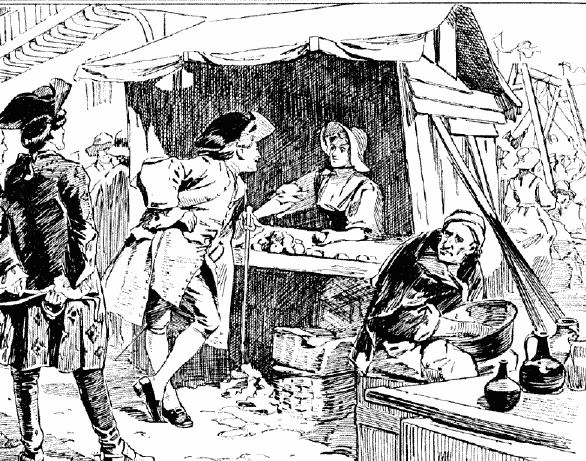Fairs provided a welcome break from the daily round of life in a country town, the chance to spend money and enjoy the fun of the fair. Richard Holbeche recalled the Sutton fairs of his childhood in the 1850s - “booths and stalls were set up wherever a space could be found, selling sweets and nuts or housing sideshows of freaks, wild animals or shooting galleries, all the stallholders shouting their wares in loud voices”. Fairs have been providing this light relief for thousands of years, usually combined with a good deal of trading.
The trading aspect of the fairs was noted by a writer on Sutton Coldfield in 1762 - “There are two annual fairs, on Trinity Monday and November 8th, at which are sold great quantities of horned cattle, horses and sheep, but nothing of any other sort of commodities worth notice.” There may have been fairs at Sutton in the thirteenth century and earlier, regulated under the feudal system by the Lord of the Manor and his court, but as the population grew and markets flourished it was desirable to validate the fairs by securing a charter from the King. On 22 September 1300 King Edward III granted a charter to Guy Beauchamp, Earl of Warwick (lord of the Manor of Sutton), for a fair on the vigil, feast and morrow of Holy Trinity, to be held in the Manor of Sutton. This grant was renewed by King Edward III in 1353 (just after the devastating plague known as the Black Death), allowing Thomas Beauchamp lord of the manor of Sutton Coldfield, to hold the three-day Trinity fair and also a two-day fair at Martinmas (11 November.)
These fairs had lapsed by the time Sutton became a self-governing town in 1528, but the charter establishing the town also granted two new fairs, at the feasts of Trinity and Saints Simon and Jude (November 8th). The fairs were marked by the authorities with great solemnity: “The Warden and Society walk in grand procession with a band of music, and publicly proclaim the fair and the holding of a court of pie-powder for hearing and determining disputes arising therein” according to the anonymous 1762 author. This parade, known as “walking the fair” continued until 1885, when the old town charter was superseded by a new Borough charter. In 1842 the Warden claimed £4.4s.0d. expenses for walking the two fairs; and entry in the diary of Francis Chavasse reads “1863 May 28 First day of the fair, a great many people in the street”, but Sarah Holbeche noted in 1866 “November 8. Fair day. Not a head of cattle - consequence of the cattle plague. “Walking” left off - simply proclaimed from the town hall. The veterans of the halberds gone, and the blue noses, swinging of arms to warm the hands and pea soup of former days”.
William Midgley wrote of the fairs in his 1904 “Short history of the Town and Chase of Sutton Coldfield”, “till 1885 there was a memory even of the lord’s procession when the “Sergeant-at-Mace”, in a curious green dress, went to open the fair, followed by a procession of old men carrying the pikes and halberds that are still kept at the town hall.”
